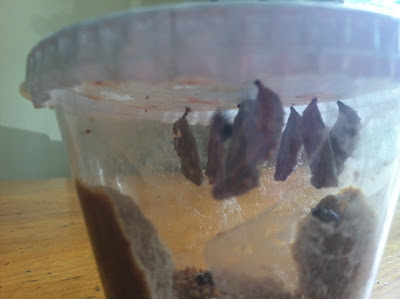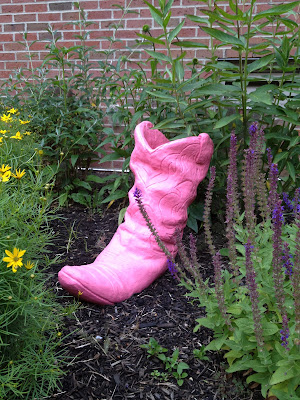The Painted Lady caterpillars are
now in their chrysalises. We have 39
chrysalises (one caterpillar didn't make it).
It has been three days since the
caterpillars have formed their chrysalises so . . . it's moving time. I removed the lid and placed the filter on a
stack of paper towels in the bottom of a butterfly cage.
The butterflies don't need to be
hanging to successfully emerge - they can come out in the laying down
position. Twice a day the chrysalises need to be misted lightly
with water so they don't dry out. It
usually takes about 7 to 10 day for the butterfly to make its way out of the
chrysalises. It might look like nothing
is happening but it is really a time of rapid change. Within the chrysalis the old body parts of
the caterpillar are undergoing a remarkable transformation, called
metamorphosis.
The reddish liquid on the filter
paper is merconium. Merconium is excess
liquid the caterpillar didn't use during wing formation.

















































